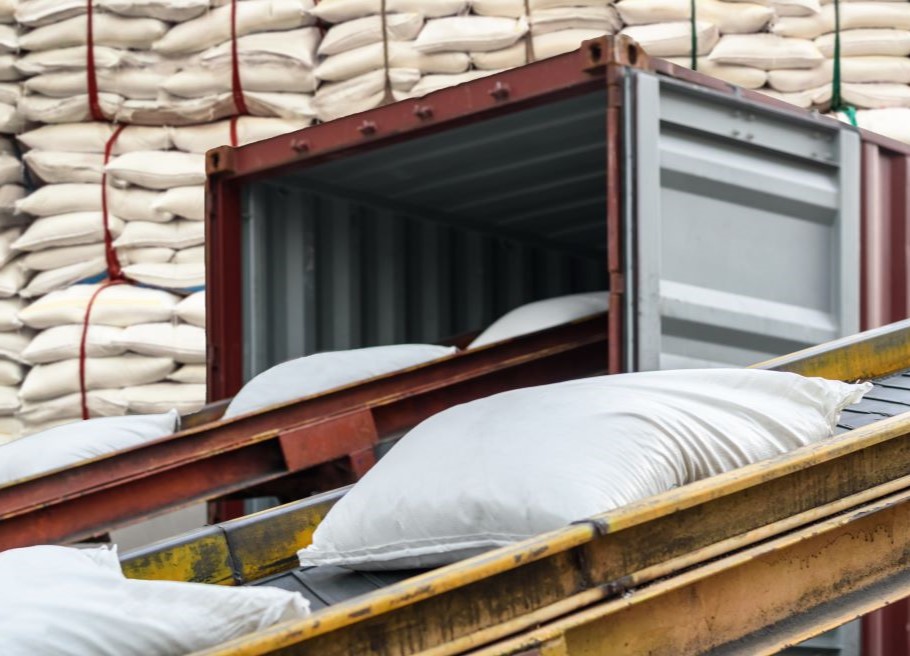Forever Chemicals in Food and Food Packaging: Regulatory Perspectives from Susie Hoeller
Transcribed from the Eye on Food Safety with Dr. D Podcast
Food safety professionals are facing a growing challenge in the form of per- and polyfluoroalkyl substances (PFAS) – a vast group of man-made “forever chemicals” that have infiltrated the food supply. These compounds, used in everything from food packaging to firefighting foam, pose serious health risks and are proving difficult to regulate.
In a recent discussion hosted by Global Food Safety Resource, industry expert Susie Hoeller, an experienced international business and regulatory attorney, provided valuable insights into the PFAS crisis and what food safety professionals need to know.
With the regulatory landscape in flux and public concern growing, companies that fail to test and disclose PFAS risks could face serious legal and reputational consequences.
What is PFAS?
PFAS, as Hoeller explained, is an umbrella term for around 15,000 different substances.
“PFAS is basically an abbreviation. There are about 15,000 substances. It’s a group of chemicals, and the name … they’re called per- and polyfluoroalkyl substances, and they’re abbreviated as PFAS,” she said.
The pervasive nature of these “forever chemicals” is a major concern.
“They’ve become very ubiquitous, and they’ve been intentionally added into consumer products, including food packaging and food processing equipment,” Hoeller said. “And then they’ve also come into the water supply through basically contamination of the water, through manufacturing processes, and through wastewater.”
These PFAS compounds were first developed in the 1930s and gained widespread use after World War II.
“They were used in food packaging to prevent grease from leaking. They were used in firefighting foam, consumer textiles … so many uses to prevent grease oil stains. So, they had a lot of great properties, but it’s only been in recent years that they people now realize there’s some health concerns involved with them … it’s in the water supply so it’s become a major public health issue. And again, food safety, because you don’t want chemicals migrating into your food.”
Health Risks with PFAS
The health risks associated with PFAS exposure are significant and wide-ranging.
“Too much exposure to these chemicals can change cholesterol levels, can cause developmental delays in children, low birth weight, decreased fertility, a lot of hormonal changes, thyroid diseases, various cancers, kidney, prostate, testicular cancer, changes in blood pressure during pregnancy … liver damage, colitis,” Hoeller said. “There’s a whole host of really serious illnesses when people have elevated PFAS from food and drinks in their bloodstream and in their bodies.”
These health concerns have led to growing public awareness and advocacy around PFAS.
“Some companies decided not even to sell in California because they didn’t want to deal with the testing and the exposure and the labeling (required),” she said. “If you go on like an Amazon or Walmart.com or Target.com, you’ll see this product not available in California, and that’s because the manufacturer decided they just didn’t want to deal with California’s Prop 65 regulations.”
A Patchwork of Regulations
The regulatory landscape surrounding PFAS is complex and evolving, with states taking
the lead.
“In 2018, Washington State, out on the West Coast, was the first state to ban intentionally added PFAS, actually in paper, paperboard, and plant fiber-based food packaging … as today there are 13 states that have regulations banning or restricting intentionally added PFAS into several types of food packaging,” Hoeller said.
However, this patchwork of state-level regulations creates challenges for food manufacturers and importers.
“Now you have to really be involved in looking at what these states are doing too, which for a larger company with a big legal department, that’s not as challenging, but for entrepreneurial, smaller companies entering the food market, or importers, it can be a lot more difficult because now they have to do a lot more research to make sure that they don’t get into a problem,” she said.
Hoeller provided an example of the complexity, noting that “California has already Proposition 65 that I mentioned earlier … they’ve already been suing food packaging companies already for not having warnings in California.”
Through agencies like the FDA and EPA, the federal government is also grappling with the PFAS issue. Hoeller shared insights from a recent FDA meeting, noting that the agency is “developing an enhanced systematic process for us to evaluate chemicals that are migrating into food and an assessment of it … they’re putting more research and resources into understanding the literature, doing chemical signal monitoring, so if a report comes out that these particular chemicals are harmful, they’re going to evaluate that.”
However, she said, the FDA also expressed concerns about “social media hysteria.”
“They said there are a lot of reports that come out that aren’t really scientifically based, and then it gets people, all you know, worried and concerned,” she said. “They weren’t saying social media is bad, they were just saying that … we’ve got to look at what is science-based and not what is somebody just writing about it.”
Proactive Testing and Due Diligence
For food industry professionals, Hoeller emphasized the importance of proactive testing and due diligence.
“If you’re putting food, food packaging, or a consumer product out there, you’ve got to be on top of this. And like I’ve told my clients that have products that they’re offering, you need to get with a test lab,” Hoeller said. “I’m not a chemist. I’m not a toxicologist, personally, but I’m giving you legal advice that you need to get with a test lab. And you need to look at your products and determine, do you have intentionally added PFAS? … You need to get on top of this and figure out how your product is impacted.”
With the regulatory landscape in flux and public concern growing, companies that fail to test and disclose PFAS risks could face serious legal and reputational consequences.
“Forever chemicals” have infiltrated nearly every aspect of the food supply, from packaging to processing equipment to the very water used to grow and produce our food. With state-level regulations creating a patchwork of requirements and federal agencies still grappling with the scope of the problem, food safety professionals be proactive.
By staying informed, taking decisive action, and working together, we can confront the PFAS crisis head-on and protect the safety and integrity of the food we all depend on.
This conversation and all the previous episodes of Eye on Food Safety with Dr. D. are available for listening on Apple Podcasts and Spotify, and video recordings may be viewed on-demand with a Premium Subscription from GFSR.

-
 FeaturedRisk management
The Cost of a Breach: What a Cyberattack Could Mean for Food Safety Recalls
FeaturedRisk management
The Cost of a Breach: What a Cyberattack Could Mean for Food Safety Recalls
-
 FeaturedRisk management
Securing the Food Chain: How ISO/IEC 27001 Strengthens Cybersecurity
FeaturedRisk management
Securing the Food Chain: How ISO/IEC 27001 Strengthens Cybersecurity
-
 FeaturedRisk management
Revolutionizing Food Safety Training: Breaking Out of the “Check-the-Box” Mentality
FeaturedRisk management
Revolutionizing Food Safety Training: Breaking Out of the “Check-the-Box” Mentality
-
 GFSI Standards
GFSI 2025: Building Trust, Tech-Forward Solutions, and Global Unity in Food Safety
GFSI Standards
GFSI 2025: Building Trust, Tech-Forward Solutions, and Global Unity in Food Safety
-
 FeaturedFood Safety
Integrated Pest Management: Strategies to Protect Your Brand’s Reputation
FeaturedFood Safety
Integrated Pest Management: Strategies to Protect Your Brand’s Reputation
-
 FeaturedFood Safety Culture & Training
No Open Door Policy: Challenges That Impact Pest Control in Food Processing Plants
FeaturedFood Safety Culture & Training
No Open Door Policy: Challenges That Impact Pest Control in Food Processing Plants



